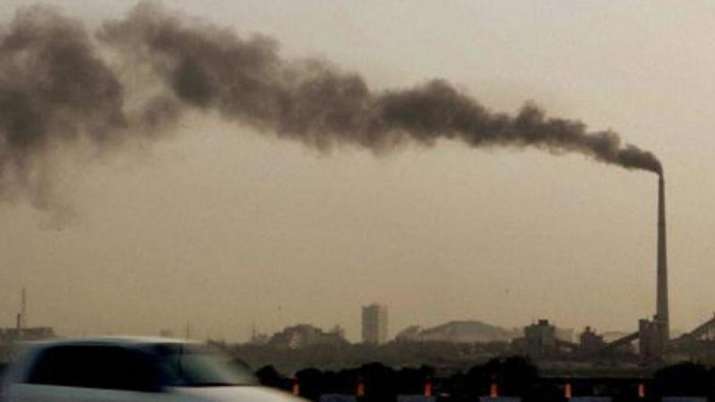
The report is based on information gathered by a network that monitors the number of greenhouse gases that remain in the atmosphere after some amounts have been absorbed by the oceans and biosphere.
In a report published on Monday, the World Meteorological Organization said greenhouse gas concentrations set a new record last year and increased at a faster rate than the annual average for the past decade, despite temporary reductions during pandemic lockdowns.
The news came as the United Nations Climate Office warned that the world was well off target to meet its emissions cuts target as part of international efforts to curb global warming.
Both the announcements came days before the start of the United Nations Climate Change Conference in Glasgow, Scotland. Many environmental activists, policy makers and scientists say that October 31-Nov. The 12 programme, known as COP26 for short, marks an important and even significant occasion for concrete commitments to the goals set out in the 2015 Paris climate agreement.
“The Greenhouse Gas Bulletin has a clear, scientific message for climate change negotiators at COP26,” said World Meteorological Organization Secretary-General Petrie Talas of his agency’s annual report on heat-trapping gases in the atmosphere.
“At the current rate of increase in greenhouse gas concentrations, we will see a temperature increase of 1.5 to 2 degrees Celsius (2.7-3.6 Fahrenheit) above the Paris Agreement’s target of 1.5 to 2 degrees Celsius (2.7-3.6 Fahrenheit) by the end of this century.” The concentrations of carbon dioxide, methane and nitrous oxide were above all levels in the pre-industrial era before 1750, when human activities “began to disrupt the Earth’s natural balance.”
The report is based on information gathered by a network that monitors the number of greenhouse gases that remain in the atmosphere after some amounts have been absorbed by the oceans and biosphere.
In its report, the Geneva-based agency also pointed to signs of a worrying new development: Parts of the Amazon rainforest have moved from carbon “sinks” that suck carbon dioxide from the air into a source of CO2 due to deforestation. and become less. Humidity in the area, it said.
Talas said, “A striking message from our report is that the Amazonian region, which used to be a sink of carbon, has become a source of carbon dioxide. And this is due to deforestation. This is due to global changes.” -The local climate, in particular. We have low humidity and low rainfall.”
Oksana Tarasova, head of WMO’s Atmospheric and Environmental Research Division, said the results were the first to trace the Amazon from sink to source, but added that they were from a specific southeastern part of the Amazon, not the entire rainforest.
The UN climate office said separately on Monday that its assessment of formal commitments made by countries that have signed the Paris Agreement shows the world could reduce its emissions by 83-88% by 2050 compared to 2019. Is.
More worryingly, based on formal pledges so far, emissions in 2030 are projected to be 16% higher than in 2010. “Such an increase, unless reversed quickly, could result in a temperature increase of about 2.7C (4.9F) by the end of the century,” the United Nations said.
Experts argued that emissions should be halved by 2030 compared to 2010 levels and essentially zero by mid-century, if Paris aims to cap global warming at 2C, ideally more than 1.5C. No, have to get.
“Exceeding temperature targets will lead to an unstable world and endless suffering, especially among those that have contributed the least to GHG emissions to the atmosphere,” said Patricia Espinosa, head of the UN climate office.
“We are nowhere near where science says we should be,” she said. Alok Sharma, who chairs the UN talks in Glasgow, said progress has been made since the 2015 Paris Agreement, when current emissions-cutting projections point to a warming of up to 4C.
According to the WMO report, the global average concentration of carbon dioxide, the main greenhouse gas, reached a new high of 413.2 parts per million last year. The WMO said 2020 growth was higher than the annual average over the past decade, despite a 5.6% drop in carbon dioxide emissions from fossil fuels due to COVID-19 restrictions.
Talas said levels above 400 parts per million – which was breached in 2015 – are “major negative for our daily lives and well-being, for the state of our planet, and for the future of our children and grandchildren.” It does impact.”
Human-caused carbon dioxide emissions, mostly resulting from the burning of fossil fuels such as oil and gas or cement production, account for about two-thirds of the warming effect on the climate. The WMO said that overall, an economic withdrawal last year due to the pandemic had “no apparent effect on atmospheric levels of greenhouse gases and their growth rates, although there was a temporary drop in new emissions.”
Read also | “Maximum hypocrisy, minimum democracy”: Congress leader Ramesh on PM’s plan to address UN climate meeting
Read also | India among 11 countries in America’s list of ‘countries of concern’ on climate change
.